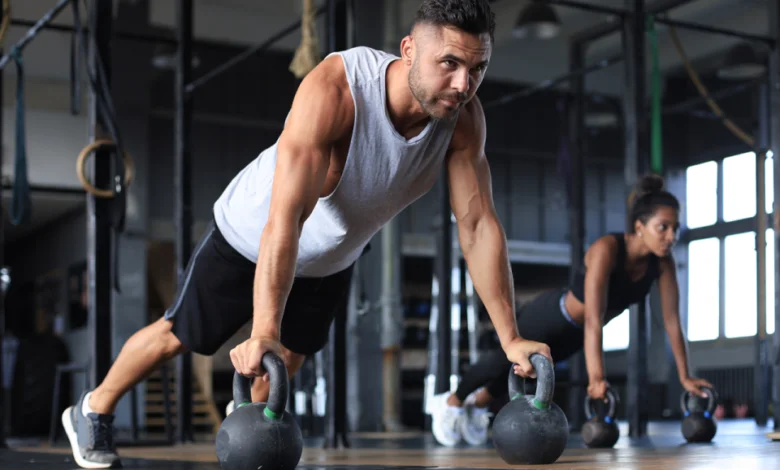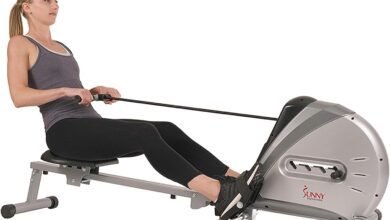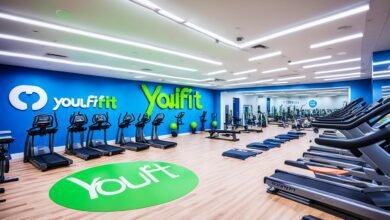Accepting Functional Fitness an All-Inclusive Strategy for Wellness and Health

In a world that often glorifies aesthetic ideals and traditional gym workouts the concept of functional fitness has emerged as a refreshing and holistic approach to physical well-being. Functional fitness focuses on real-world movements and activities, aiming to enhance the body’s ability to perform everyday tasks efficiently and prevent injuries. This paradigm shift from isolated muscle training to overall functional strength has gained popularity for its practicality and long-term health benefits.
: What level of functional fitness exists?
A: Exercise that helps your daily life is known as functional fitness. Walking, pushing, tugging, bending, squatting, lunging and core exercises are all included. Functional strength is increased by these workouts. Each of us possesses a fundamental level of functional fitness.
Understanding Functional Fitness
Functional fitness is not about sculpting a specific body shape or lifting heavy weights for the sake of it. Instead it emphasizes exercises that mimic and improve the movements we perform in our daily lives. Whether it’s lifting groceries, bending to tie shoelaces or carrying a child functional fitness aims to enhance the body’s capabilities for these functional movements.
Key Components of Functional Fitness
- Core Strength: A strong core is at the heart of functional fitness. It stabilizes the spine and supports almost every movement we make. Exercises like planks, twists and bridges help develop a stable and resilient core, reducing the risk of lower back pain and improving posture.
- Balance and Stability: Functional fitness incorporates exercises that challenge balance and stability, such as single-leg movements or exercises on unstable surfaces. These activities not only strengthen muscles but also enhance coordination, reducing the likelihood of falls and injuries.
- Flexibility and Mobility: Unlike traditional weightlifting, functional fitness places a significant emphasis on flexibility and joint mobility. Improved flexibility ensures a full range of motion, making daily activities more comfortable and decreasing the risk of muscle strains.
- Full-Body Movements: Functional exercises often involve multiple muscle groups and joints, promoting a more comprehensive and efficient workout. Compound movements like squats, lunges and kettlebell swings engage various muscle groups simultaneously mirroring the demands of real-world activities.
Benefits of Functional Fitness
- Practical Application: Functional fitness enhances the body’s ability to perform daily tasks effortlessly making it a practical approach to overall health and well-being. Whether it’s carrying groceries or playing with children the benefits extend beyond the gym.
- Injury Prevention: By focusing on strengthening the body as a whole and improving flexibility, functional fitness reduces the risk of injuries associated with imbalances and weak stabilizing muscles. This makes it a sustainable and injury-preventive approach to exercise.
- Adaptability: Functional fitness routines can be adapted to various fitness levels and ages. Whether you’re a beginner or an experienced athlete the principles of functional fitness can be tailored to meet individual needs and goals.
- Long-Term Health: The emphasis on overall health and functionality makes functional fitness a sustainable long-term practice. It promotes a balanced and active lifestyle contributing to improved cardiovascular health, better posture and increased energy levels.
Functional Training
Large muscle groups in the human body collaborate to perform a myriad of functional actions essential for daily life. Functional training is a fitness approach that focuses on exercises mimicking everyday activities, aiming to enhance overall strength, flexibility and coordination. This type of workout not only contributes to improved fitness but also translates into better performance in real-world tasks.

Leg Muscles
- Quadriceps and Hamstrings: These muscles are engaged in activities like squatting, standing up and walking. Functional exercises such as squats and lunges target these muscle groups promoting better balance and stability.
- Calves: Essential for activities like walking and running the calf muscles are worked during exercises such as calf raises. Strong calves contribute to better mobility and prevent injuries.
Core Muscles
- Abdominals and Obliques:The core is involved in virtually every movement from bending over to twisting. Exercises like planks, twists and rotational movements strengthen the core, enhancing overall stability and reducing the risk of lower back pain.
- Lower Back: Functional training includes exercises that target the lower back muscles, promoting a strong and stable spine. This is crucial for maintaining proper posture and preventing injuries.
Back Muscles
- Latissimus Dorsi: The muscles in the upper back are engaged in actions such as pulling, lifting and reaching. Rows and pull-ups are examples of exercises that target the latissimus dorsi contributing to improved upper body strength.
- Erector Spinae: These muscles run along the spine and are engaged in activities like bending and lifting. Exercises like deadlifts help strengthen the erector spinae, promoting a resilient and supportive back.
Chest Muscles
- Pectorals: Functional movements involving pushing and lifting benefit from strong chest muscles. Push-ups and chest presses are examples of exercises that target the pectorals, aiding in activities like pushing open a door or lifting objects.
Shoulder Muscles
- Deltoids and Rotator Cuff: Functional training includes exercises that promote shoulder stability and flexibility. Shoulder presses, lateral raises and external rotations strengthen these muscles facilitating movements like reaching overhead or carrying objects.
Arm Muscles
- Biceps and Triceps: Everyday activities often require the use of arm muscles for tasks like carrying bags or lifting items. Bicep curls and tricep dips are examples of functional exercises that enhance arm strength and endurance.
By incorporating functional training into your fitness routine you not only build muscle but also improve the efficiency of your movements in daily life. The adaptability of these workouts to real-world tasks makes them a valuable component of a well-rounded fitness program, enhancing both physical performance and overall functional capacity.
Improved Functional fitness
Functional training focuses on movements that mimic everyday activities and engage multiple muscle groups simultaneously. This type of training emphasizes strength, flexibility and coordination. Exercises often involve using body weight, resistance bands, stability balls and other tools that challenge the body in various planes of motion.

Calorie Burning in Functional Training
- Increased Oxygen Consumption: Functional training often involves dynamic, multi-joint movements that require greater oxygen consumption. As a result the body’s metabolic rate is elevated during and after these exercises, leading to increased calorie expenditure.
- Muscle Engagement: Since functional training targets multiple muscle groups it demands more energy to coordinate these movements. The increased muscle engagement contributes to higher calorie burning compared to isolated exercises.
- EPOC (Excess Post-Exercise Oxygen Consumption): Functional training can lead to a higher EPOC, commonly known as the afterburner effect. This means the body continues to burn calories at an elevated rate even after the workout is completed.
Standard Weight Training
Standard weight training on the other hand often involves isolated movements that target specific muscle groups using free weights or machines. This type of training is widely used for building muscle strength and hypertrophy.
Calorie Burning in Standard Weight Training
- Muscle Mass Development: Weight training contributes to the development of lean muscle mass. While this doesn’t directly burn as many calories during the exercise sessionhaving more muscle increases the resting metabolic rate, leading to continuous calorie burning at rest.
- EPOC: While not as pronounced as in functional training, weight training can also result in an EPOC effect contributing to additional calorie burning post-exercise.
Comparison
- Oxygen Consumption: Both functional and weight training increase oxygen consumption, but functional training may have a slight edge due to its emphasis on dynamic, multi-joint movements.
- Muscle Engagement: Functional training generally involves more muscle groups simultaneously, leading to increased calorie expenditure during the workout.
- EPOC: Both types of training can contribute to EPOC, but the intensity and complexity of functional training may result in a more prolonged afterburner effect.
Practical Fitness increases muscle
Functional strength exercises are essential for developing strength and muscle mass while also enhancing the body’s ability to perform daily tasks. The exercises you mentioned farmer’s walks, rows, presses, deadlifts and squats are excellent choices. Below, I’ll provide detailed explanations for each exercise along with some additional functional strength exercises.
- Farmer’s Walks:
- Hold a heavy weight in each hand (dumbbells, kettlebells or farmer’s walk handles).
- Keep your back straight and shoulders back.
- Walk for a predetermined distance or time.
- This exercise improves grip strength, core stability and overall endurance which is beneficial for carrying groceries or luggage.
- Rows:
- Use a barbell, dumbbells or a cable machine.
- Maintain a flat back and hinge at your hips.
- Pull the weight towards your chest, squeezing your shoulder blades together.
- Rows strengthen the upper back and improve posture, making activities like pulling or lifting easier.
- Presses:
- Overhead press with a barbell or dumbbell.
- Keep your core engaged and press the weight overhead.
- This exercise targets the shoulders, triceps and upper back, helping with activities that involve reaching or lifting overhead.
- Deadlifts:
- Start with your feet hip-width apart and grab the bar with a hip-width grip.
- Keep your back straight, and chest up and lift the bar by extending your hips and knees.
- Deadlifts work the entire posterior chain, including the lower back, glutes and hamstrings which is crucial for activities like lifting heavy objects off the ground.
- Squats:
- Stand with your feet shoulder-width apart, chest up and core engaged.
- Lower your body by bending your knees and hips keeping your back straight.
- Squats target the lower body, including the quadriceps, hamstrings and glutes. This is beneficial for activities such as sitting down or standing up.
- Lunges:
- Step forward with one foot and lower your body until both knees are bent.
- Push back up to the starting position and repeat on the other leg.
- Lunges improve single-leg strength, stability and balance, mimicking movements like walking or climbing stairs.
- Push-ups:
- Start in a plank position and lower your body by bending your elbows.
- Push back up to the starting position.
- Push-ups strengthen the chest, shoulders, and triceps, aiding in activities that involve pushing or pressing motions.
- Plank:
- Hold a plank position with your body in a straight line from head to heels.
- Engage your core and hold for a specified duration.
- Planks strengthen the core improving overall stability and supporting various daily activities.
Conclusion
In a world where the demands of daily life can be physically taxing functional fitness stands out as a holistic and practical approach to health and wellness. By focusing on movements that mimic real-world activities this fitness philosophy not only enhances physical performance but also promotes overall well-being making it a valuable addition to any fitness regimen. Whether you’re a fitness enthusiast or someone looking to start their fitness journey embracing functional fitness can pave the way to a healthier more functional life.





Awesome! Its genuinely remarkable post, I have got much clear idea regarding from this post
Keep up the fantastic work! Kalorifer Sobası odun, kömür, pelet gibi yakıtlarla çalışan ve ısıtma işlevi gören bir soba türüdür. Kalorifer Sobası içindeki yakıtın yanmasıyla oluşan ısıyı doğrudan çevresine yayar ve aynı zamanda suyun ısınmasını sağlar.